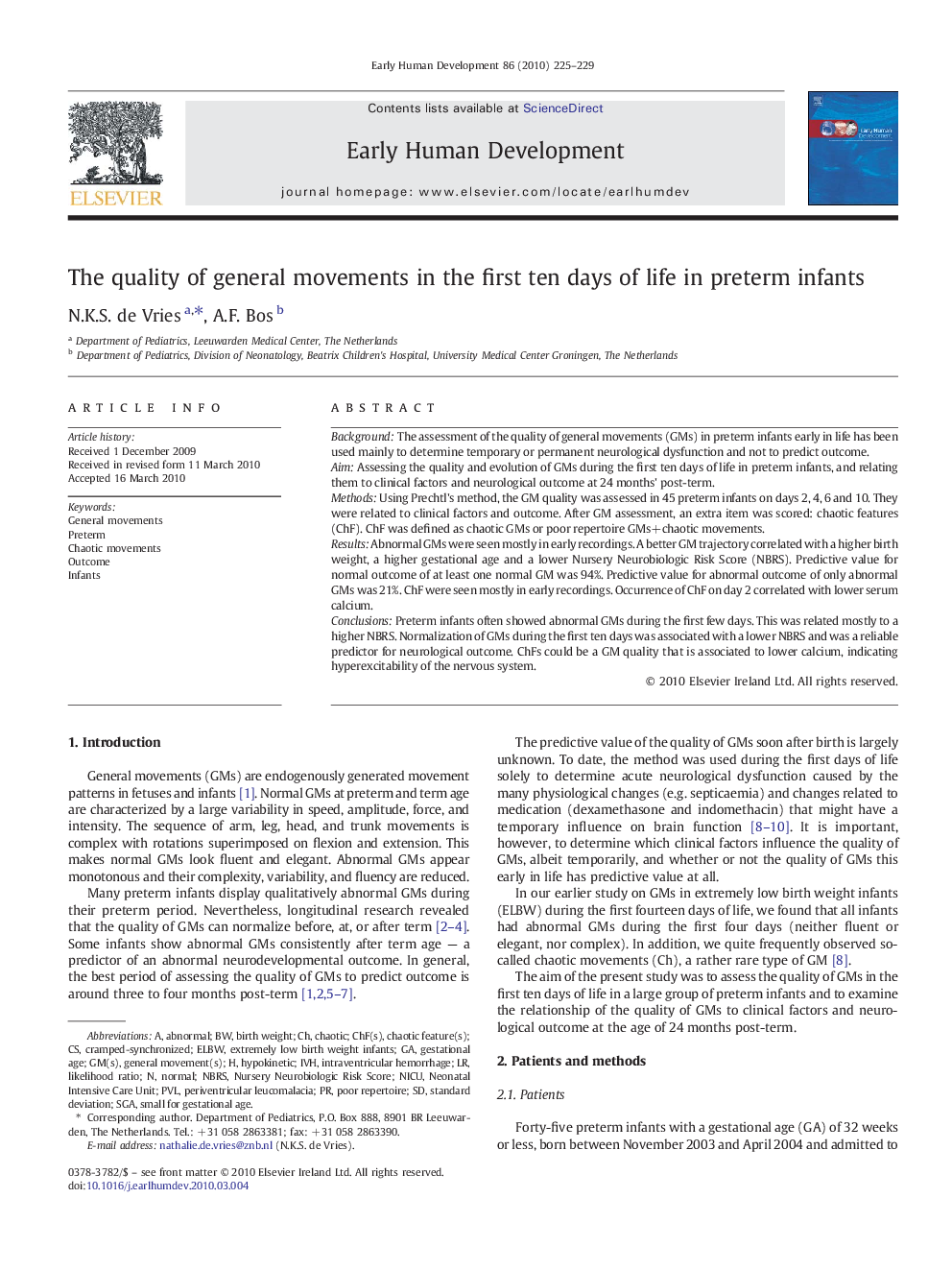| Article ID | Journal | Published Year | Pages | File Type |
|---|---|---|---|---|
| 3918458 | Early Human Development | 2010 | 5 Pages |
BackgroundThe assessment of the quality of general movements (GMs) in preterm infants early in life has been used mainly to determine temporary or permanent neurological dysfunction and not to predict outcome.AimAssessing the quality and evolution of GMs during the first ten days of life in preterm infants, and relating them to clinical factors and neurological outcome at 24 months' post-term.MethodsUsing Prechtl's method, the GM quality was assessed in 45 preterm infants on days 2, 4, 6 and 10. They were related to clinical factors and outcome. After GM assessment, an extra item was scored: chaotic features (ChF). ChF was defined as chaotic GMs or poor repertoire GMs+chaotic movements.ResultsAbnormal GMs were seen mostly in early recordings. A better GM trajectory correlated with a higher birth weight, a higher gestational age and a lower Nursery Neurobiologic Risk Score (NBRS). Predictive value for normal outcome of at least one normal GM was 94%. Predictive value for abnormal outcome of only abnormal GMs was 21%. ChF were seen mostly in early recordings. Occurrence of ChF on day 2 correlated with lower serum calcium.ConclusionsPreterm infants often showed abnormal GMs during the first few days. This was related mostly to a higher NBRS. Normalization of GMs during the first ten days was associated with a lower NBRS and was a reliable predictor for neurological outcome. ChFs could be a GM quality that is associated to lower calcium, indicating hyperexcitability of the nervous system.
